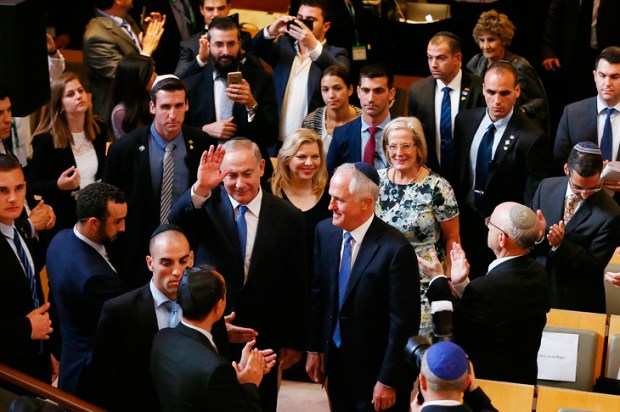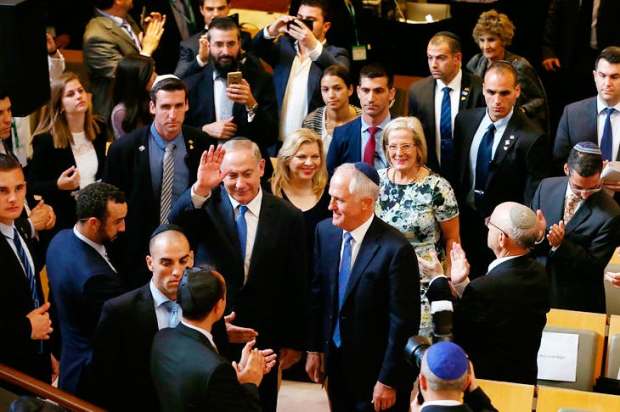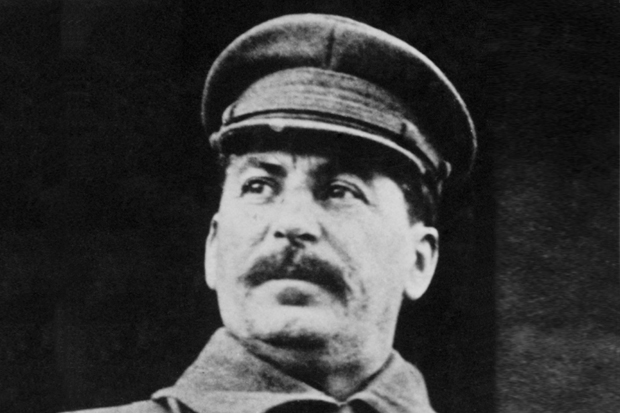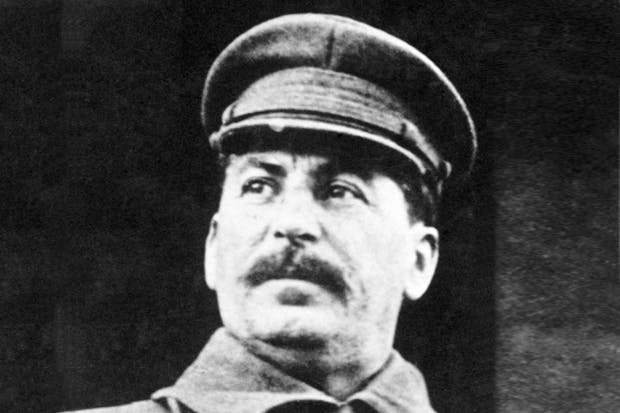When Senator Eric Abetz was a raw youth of 23, he had what he calls an ‘instructive’ experience. A newly graduated lawyer from Tasmania, he joined the 1985 group in Melbourne (‘troglodytes and lunatics’, according to Prime Minister Bob Hawke) fighting the historic Dollar Sweets case in which a small employer was battling for survival against union bullies and thugs. Young Abetz’s job was to call on other employers in the confectionary business and ask for support. One employer responded: ‘Why should I worry if Dollar Sweets goes down? It will mean more business for me.’ It remained for Abetz an indelible memory of short-sighted and weak-kneed employers. It also helps motivate his support today for ‘valiant’ employers like Daniel Grollo (of Grocon) and Mike Kane (Boral) who have stood up to threats, boycotts and intimidation.
Abetz recalled the Dollar Sweets anecdote at the Sydney Institute last week in his paper on what he calls the Thirty Years War in Australian industrial relations. This war began in September 1983 when Gerard Henderson published in Quadrant his landmark polemic ‘The Industrial Relations Club’. The Club is that cosy ring of unionists, employers and arbitration commissioners who ‘settle’ disputes, untroubled by economic realities such as capacity to pay, the rights of the individual, of the individual enterprise or of the unemployed. This union-dominated Club gradually lost clout under the Howard government but was fully rehabilitated in the lost Rudd-Gillard-Rudd years. Now under Abbott, the Club is again in retreat. Senator Abetz as Minister for Employment (that is, for jobs) sees his task as bringing the warring parties to a ‘sensible centre’. He wants a new Treaty of Westphalia to put an end at long last to our industrial Thirty Years War.
Talking of ‘instructive’ moments in life, the artist (and political cartoonist) Bill Leak revealed his ‘great moment’ to a couple of hundred followers assembled in the Manly Art Gallery last Saturday afternoon to hear him talk about his portraits on exhibition. He was, he says, ‘a troubled youth’ of 16 when he saw his first Picasso in a touring exhibition at the Art Gallery of NSW. ‘It changed my life. It made me realise that life is worth living.’ (He already was a budding cartoonist. His cartoons of his teachers at school had protected him from continually being bashed up because of his arty interests. The cartoons of a nude science teacher making love to the arts mistress was a great hit at Beacon Hill High. He claims he pre-dated Pickering’s annual calendars.) But after the Picasso revelation he knew he was meant to be a painter. He enrolled in the Julian Ashton Art School to learn about paint. (There were other lessons too. Dick Ashton, the director, sticks in the memory. Looking down his nose he would tell Leak, ‘Put your artistic temperament in the rubbish bin over there. You are here to work.’) But he did not commit himself to portraiture until he saw the great Cézanne exhibition in Paris in 1978. He found, he said, far more depth and complexity in Cézanne’s portraits of his wife than in any of his paintings of an orange! Back in Sydney for a brief visit he met Brett Whiteley who urged him to stay. (‘God had spoken! So I stayed.’) He began his series of portraits of artists (Pro Hart), sportsmen (Don Bradman), politicians (Malcolm Turnbull), the occasional murderer (Chow Hayes), punk (Tilly Devine), diplomat (Dick Woolcott) and even one art critic, Bob Hughes (‘I now have a face,’ declared Hughes. ‘Someone has to paint me. It should be you.’ They talked into the nights about Goya — painter and cartoonist.) Leak despises didactic painting, can’t stand Artist’s Statements and loathes clever art. (He quotes Gully Jimson from Joyce Cary’s The Horse’s Mouth: ‘Clever art is like farting “Annie Laurie” through a key hole. It’s clever and takes a lot of practice. But is it worth it?’) His retrospective of 30 portraits in a small suburban galley was enormously popular. It attracted over 10,000 paying customers.
The new inquiry into waste and inefficiency in the ABC is all very well, but it will not touch the main problem — widespread public complaint of bias. It is obviously not a universal complaint. One recent ReachTEL poll found that almost 60 per cent of respondents had no complaints about ABC biases. But that left 40 per cent of those polled who have either complaints or reservations about bias. That is a huge minority. Why does the ABC ignore this minority or not take it seriously? It already has public procedures for dealing with simple errors of fact or taste, but it continues to deny or deride complaints about endemic leftism. It recently began a service called Fact Check to check biased and inaccurate statements made by public figures, although not by the ABC. Another programme, Media Watch, trains a polecat eye on the commercial media’s biases but very rarely indeed on the ABC’s. The public broadcaster has a statutory duty to be ‘impartial according to the recognised standards of objective journalism’. Tax-payers pay for it on the understanding that it meets its statutory duty. Why will it not develop a programme that deals regularly and openly with the public’s complaints? The ABC intimates that there are all sorts of reasons why the suggestion is unworkable. But it will not say what they are. Its silence strengthens the validity of the complaints.
Got something to add? Join the discussion and comment below.
Get 10 issues for just $10
Subscribe to The Spectator Australia today for the next 10 magazine issues, plus full online access, for just $10.













Comments
Don't miss out
Join the conversation with other Spectator Australia readers. Subscribe to leave a comment.
SUBSCRIBEAlready a subscriber? Log in